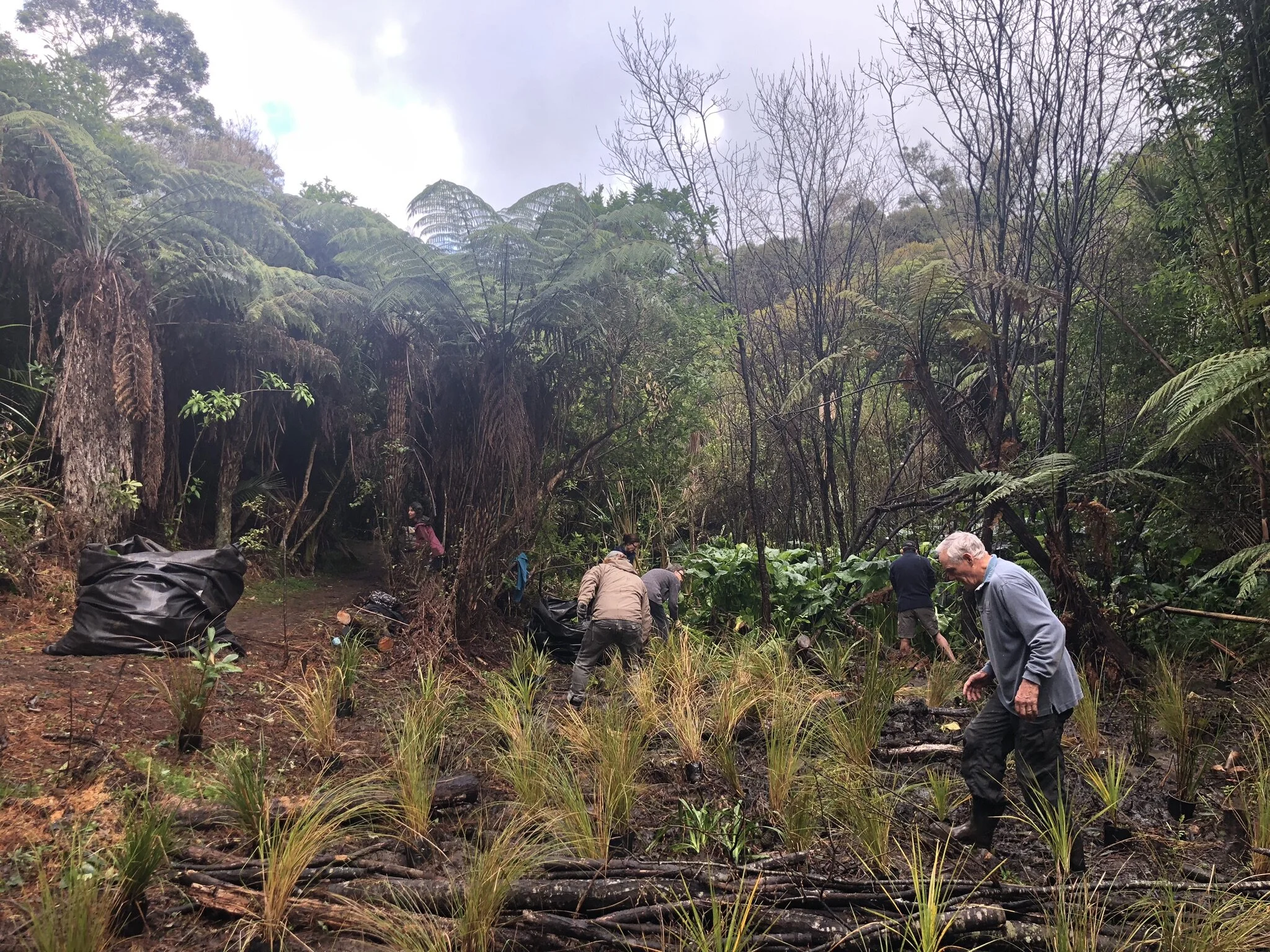Landscape Restoration
This is the page description.
community led environmental restoration
As we are coming to realise, our natural world needs protecting at both a local and global level. Community led restoration of our precious patches of native bush, streams and wetlands is a largely unseen but enormously important. Every week thousands of volunteers across New Zealand throw on their gumboots, grab their spades and venture forth to do battle with weeds and predators. Their good work helps create and restore viable habitats for our native wildlife while helping stop pollution runoff reaching our streams, water ways and harbours.
Community led environmental restoration also helps create resilient and connected communities. People working together to restore their local natural environments get to know their neighbours and other like minded people, create friendships and start to look out for one another, as well as the local flora and fauna. There is also a sense of continuity and contribution that comes from being part of a project protecting and restoring a natural environment, to be enjoyed by future generations.
As an advocate of community led restoration, I offer design and consulting services, paid and unpaid, to community groups and private landowners, see below.
first step, invite your community to a barbecue and form a group…
It takes your communities support to bring your project to life, so invite them to join - a barbecue is a great way to start the proceedings.
second Step: weed mapping…
The next step in tackling a weedy valley, farmland, or reserve is identifying what and where the weed problem is and mapping it to enable a control and eradication plan to be formulated.
Step 3 - make a plan
The development of a landscape plan is invaluable in helping to work out what the scope of work is, what to focus on, what plants you need, where to plant them and when.
then find some money!
Once you know what you need in the way of resources then its time for fund raising, grant application writing, fund raising, fund raising and more fund raising to ensure your groups goals are achieved.
Next step: weeding and planting - the hard part can be the fun part…
Especially if you have a team dedicated to the task. Click the button to view the video and see the community in action…
Doing the “mahi” can bring a community of neighbours’, land owners or environmental enthusiasts together and create a shared sense of purpose and satisfaction at doing good work for the local and wider natural environment.
And then there are the rats….
and the stoats, weasels, rabbits and mice… so a good pest control program will be needed to ensure the local fauna can move back in to their newly restored habitats safely.
and the water quality to test and measure…
Monitoring of all restoration activities is important as it enables you to measure the impact of the restoration projects efforts. If you have a stream running through your project, then testing the water quality will give you information on the level of pollution, pH, water clarity and invertebrate life, which simply tells you how healthy it is.
and its all worth it in the end
From a degraded forest stream to a healthy functioning wetland in 12 months, magic!
So nothing for it but to have a barbie!
And celebrate the commitment of your local community
If you have a project you are considering starting, or have already started, and would like assistance, feel free to contact me to discuss it further.













